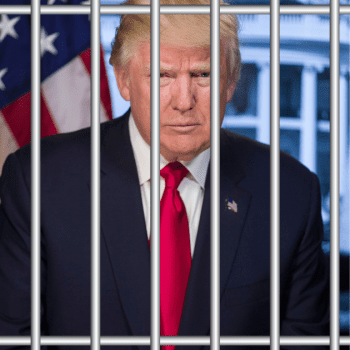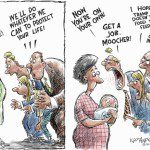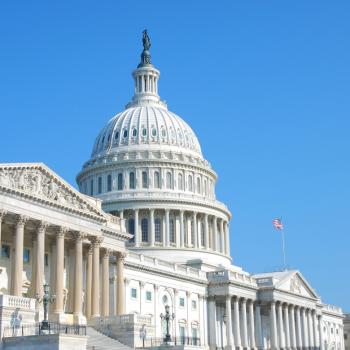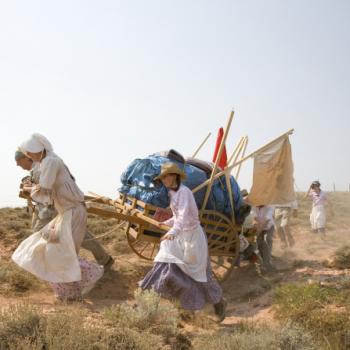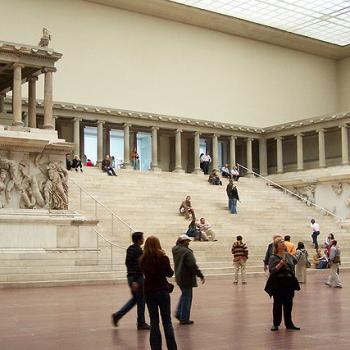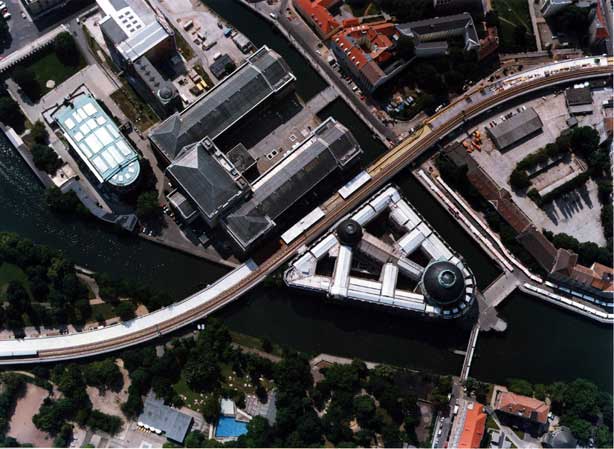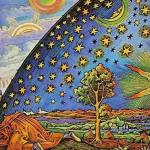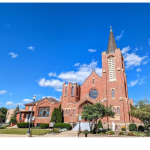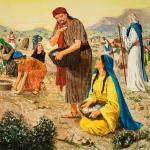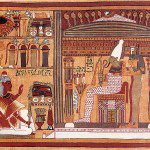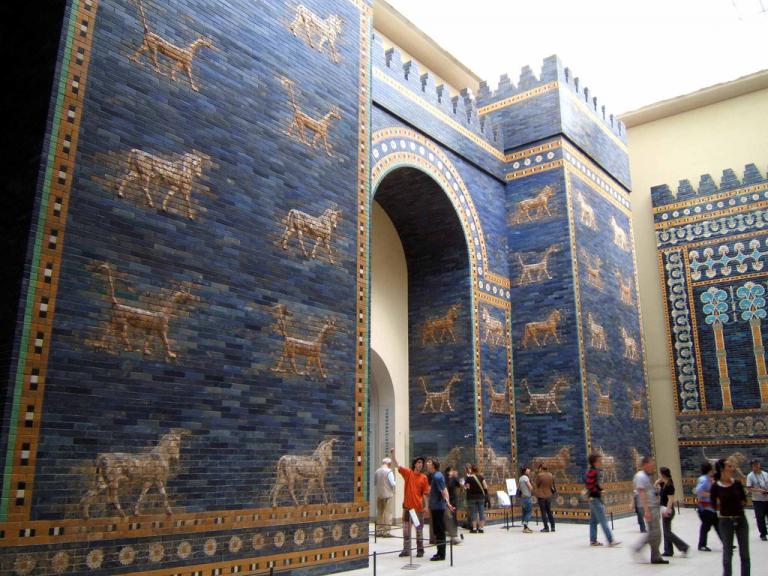
(Wikimedia Commons public domain photograph)
***
Here are some items that have been newly posted on the website of the Interpreter Foundation:
“Nibley Lectures: Time Vindicates the Prophets — A World without Prophets”
From March 7 to October 17 in 1954, Hugh Nibley delivered a series of 30 weekly lectures on KSL Radio that were also published as pamphlets. The series called “Time Vindicates the Prophets” was given in answer to those who were challenging the right of members of the Church of Jesus Christ of Latter-day Saints to call themselves Christians.
This second lecture in the series was later known as “How Will It Be When None More Saith ‘I Saw’?”
The Interpreter Radio Roundtable for Come, Follow Me Old Testament Lesson 27, “If the Lord Be God, Follow Him,” on 1 Kings 17–19, featured Steve Densley and Mark Johnson. The roundtable has now been extracted from the 22 May 2022 broadcast of the Interpreter Radio Show. The complete show may be heard at https://interpreterfoundation.org/interpreter-radio-show-May-22-2022/. Moreover, the Interpreter Radio Show can be heard on Sunday evenings from 7 to 9 PM (MDT), on K-TALK, AM 1640, or you can listen live on the Internet at ktalkmedia.com.
Jonn Claybaugh has, once again, generously provided one of his concise sets of notes for students and teachers of the scriptures who are following this year’s Sunday School curriculum.
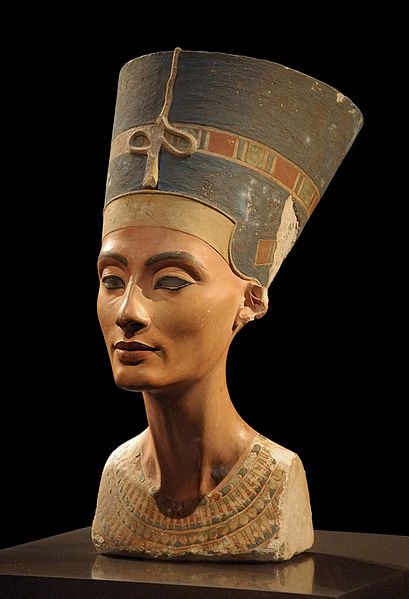
Neues Museum, Berlin (photo by Philip Pikart)
In person, she’s even more stunningly beautiful than the photographs of the sculpture can convey. My wife thinks that she looks like Audrey Hepburn.
(Wikimedia Commons public domain image)
Well, our tour effectively ended today. Some are leaving very early tomorrow, most are leaving later in the morning, and a small number of us are returning by different routes on the following day. But our joint activities as an entire group are now over.
We started this morning with a bus tour of Berlin. We drove past many interesting sites. One of them was the stadium where the 1936 Olympics were held (and where, among other things and to the furious rage of Adolf Hitler, America’s Jesse Owens outperformed representatives of the Aryan master race). We drove past the very sobering memorial to the victims of the Holocaust, got out for a while by the Charlottenburg Palace and then again by the Brandenburg Gate, and drove by the Kaiser Wilhelm Memorial Church, the Tiergarten, the Victory Column, the Berlin Zoo, Checkpoint Charlie, and the Alexander von Humboldt Universität Berlin, where the Nazis held one of their most famous and photogenic book burnings in 1933.
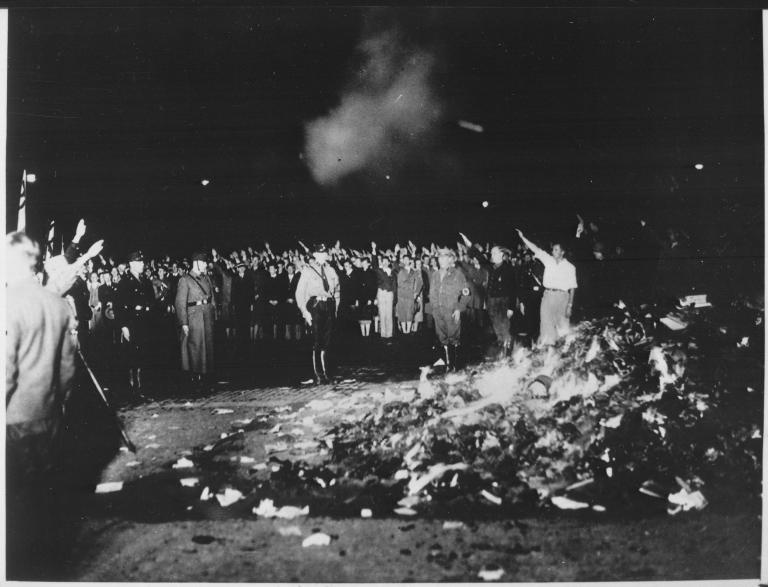
(Wikimedia Commons public domain photo)
Another place that we passed by was what is now called the “Detlev Rohwedder Building,” which is located in the Wilhelmstraße in Berlin’s historical government quarter and which has been the head office of the German Finance Ministry since 1999. That probably doesn’t sound very interesting, but the building does have an important history. It was built between 1935 and 1936 by the National Socialists, for whom it served as the headquarters of the Reich Aviation Ministry — the famous Luftwaffe — until the end of the war, which made it Herman Göring’s power base. Although, obviously, it played a central role in the Nazi war effort, the building emerged from the Second World War virtually undamaged. Then it became the headquarters for the Soviet military administration of its sector of Berlin and, thereafter, an important government building in the Communist government of the “German Democratic Republic.”
We got out of the bus there, by the Detlev Rohwedder Building, near one of the few still-standing portions of the old Berlin Wall. (How strange, when you think about it, that such a people’s paradise as the Deutsche Demokratische Republik felt itself obliged to build a wall and to supplement it with barbed wire and landmines and guards armed with machine guns in order to prevent its ungrateful citizens from attempting to escape.) We didn’t have time to visit the “Topography of Terror” exhibit there, unfortunately,, but my wife and I have seen it before, and it’s very powerful.
Following lunch together near the enormous Berlin Television Tower, we all went to the justly famous Museum Island, where most of us went to one or more of its dazzling museums and some took a sightseeing boat ride on the Spree River. One or two may have even gone into the Cathedral. My wife and I spent our time entirely in the Pergamon Museum, with its antiquities from the ancient Near East and its collection of Islamic art. We would like to have seen the bust of Nefertiti again, in the Neues Museum, but we simply ran out of time.
Then there was a group dinner, and that was it.
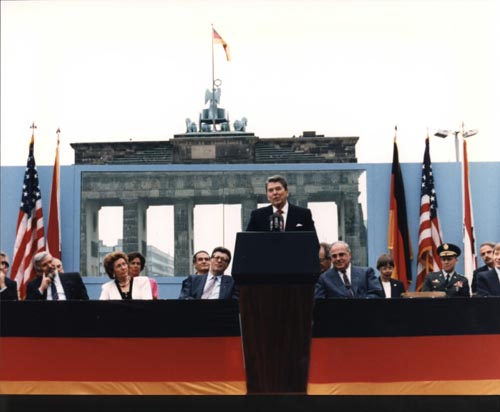
Ronald Reagan at Berlin’s Brandenburg Gate on 12 June 1987. Between him and the gate, but not visible in this photo, was the Berlin Wall. (Wikimedia Commons public domain photograph)
Yesterday, I was talking with our superb German tour manager, Christian Mauer, about the insane irregularity of English spelling. The conversation reminded me of this classic poem, which was created (so far as I’m aware) at Sonoma State University in California. The point of it, of course, is that everything in this poem would be accepted by a computer’s English-language spelling checker:
I halve a spelling chequer
It came with my pea sea
It plane lee marques four my revue
Miss steaks aye ken knot sea
Eye ran this poem threw it
Your sure reel glad two no
It’s vary polished in it’s weigh
My chequer tolled me sew
A chequer is a bless sing
It freeze yew lodes of thyme
It helps me awl stiles two reed
And aides mi when aye rime
To rite with care is quite a feet
Of witch won should be proud
And wee mussed dew the best wee can
Sew flaws are knot aloud
And now bee cause my spelling
is checked with such grate flare
Their are know faults with in my cite
Of nun eye am a wear
Each frays come posed up on my screen
Eye trussed to be a joule
The chequer poured o’er every word
To cheque sum spelling rule
That’s why aye brake in two averse
My righting wants too pleas
Sow now ewe sea wye aye dew prays
Such soft wear for pea seas.
Posted from Berlin, Germany



